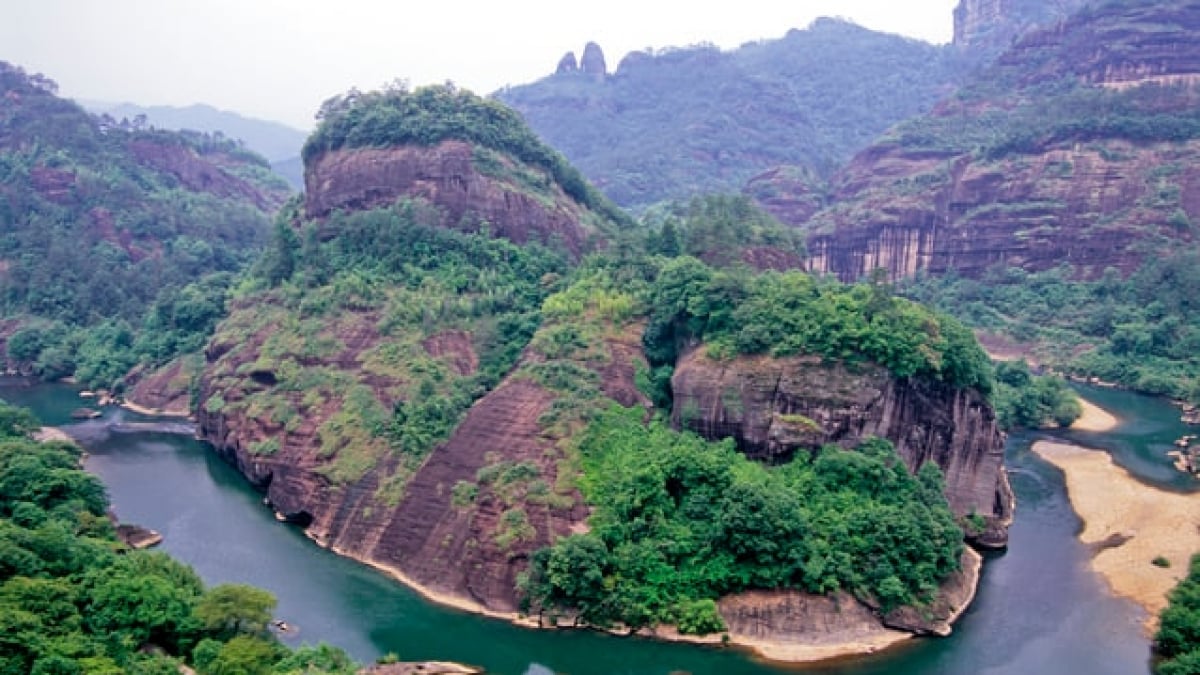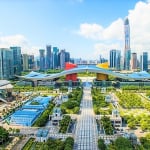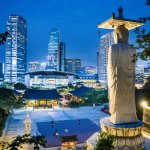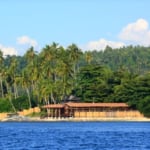Name: Wuyishan Nine-Bend Stream
Address: Wuyishan, Wuyishan City
Official/Related Website: http://www.cnta-osaka.jp/heritage/mount-wuyi

6 Recommended Tourist Spots in Wuyishan, Fujian – A World Natural and Cultural Heritage Site!
There are three tourist destinations in China that people want to visit at least once in their lifetime: Huangshan in Anhui Province, Guilin in the Guangxi Zhuang Autonomous Region, and Wuyishan in Fujian Province. All are scenic spots where you can feel the overwhelming power of nature. Among them, Wuyishan is known for its stunning landscapes created by mountain streams.
Wuyishan is registered as a World Mixed Heritage Site. As a heritage recognized for both its natural and cultural value, it is filled with tourist attractions where you can also experience Chinese culture. It's a destination that will satisfy those who want to enjoy history and culture. Now, let us introduce some of the most scenic tourist spots in Wuyishan.
table of contents
[x] close
6 Recommended Tourist Spots in Wuyishan, Fujian – A World Natural and Cultural Heritage Site!
1. Wuyishan Nine-Bend Stream (Jiuquxi)
The "Nine-Bend Stream Scenic Area" is a rafting departure point located in Xingcun Town, Wuyishan City. It spans from the end of the Ninth Bend of the stream to the First Bend near Wuyi Palace. Named after the nine turns the river takes, Nine-Bend Stream originates from Huanggang Mountain in the Wuyishan National Nature Reserve, which is also the highest peak in East China.
The stream is 62.8 km long and spans a basin area of 534 km². Both riverbanks are covered in lush greenery, with impressive bamboo forests and emerald waters. As you enter Xingcun Town, the river meanders through Nine, Eight, Seven, Six, Five, Four, Three, and Two Bends before ending at the First Bend.
The Nine-Bend Stream itself is 9.5 km long, but its straight-line length is 5 km. Rafting downstream takes about 1.5 hours, while going upstream takes about 3 hours. The water is crystal clear, and the mountains rise dramatically around the stream. The river flows in a serpentine pattern, bending nine times like an accordion.
The scenic mountains of Fujian delight visitors, casting shadows between gentle waves. The beauty is so renowned that the famous Song Dynasty minister Li Gang once wrote, “There are 36 peaks in the ancient caves of Wuyi; the river winds through the mountains and bends nine times.” It’s a destination where you can fully enjoy China’s grand natural beauty.
2. Wuyishan Ziyang Academy
Ziyang Academy is a tourist spot located near the Fifth Bend of Wuyishan. It was originally built in 1183 during the Song Dynasty and was known as “Wuyi Monastery.” It was later expanded in the late Southern Song period and renamed Ziyang Academy. The renowned Confucian scholar Zhu Xi studied here for ten years.
Initial structures included Renzhitang, Wenqiulin, Hanxiguan, Wanduiting, and Tiediting. In the Ming Dynasty, it was renamed Zhuwengong Shrine. Despite periods of decline and revival, it has become a popular tourist attraction today.
The academy is built of stone walls and preserves many inscriptions. One of Zhu Xi’s writings, “Youzhe Rusi,” still remains. As a historical site in Wuyishan, it’s a great place to relax and explore between outdoor adventures.
Name: Wuyishan Ziyang Academy
Address: Ziyang Academy, Wuyishan, Wuyishan City
3. Xiamei Ancient Residences
“Xiamei Ancient Residences” are part of Wuyishan’s World Cultural Heritage area in Fujian Province. Located about 8 km from the National Tourist Resort Zone, this area thrived during the Qing Dynasty thanks to tea production. The large-scale historic architecture scattered throughout the village captivates visitors.
The structures combine stone and wooden carvings, capturing a rustic and rural aesthetic. A 900-meter canal flows through these traditional buildings. Old townscapes remain along the canal, showcasing Han Chinese customs and culture in a charming atmosphere.
Name: Xiamei Ancient Residences
Address: Xiamei Village, Wuyizhen, Wuyishan City
4. Dahongpao Scenic Area
The Dahongpao Scenic Area is known for its famous Wuyishan tea. According to legend, the origin of “Dahongpao” (Big Red Robe) lies in a crane flying from Mount Penglai and dropping tea seeds on Wuyishan’s summit.
Another story tells of a monk from Tianshin Temple who cured a nobleman with tea leaves. In gratitude, the emperor draped his red robe over the tea tree, turning it red.
The name “Dahongpao” is inscribed on the mountainside. The tea plants grow closely together, slanting outward with broad, round leaves. The tips droop, the edges slightly curl, and the dark green leaves glisten with a reddish-purple hue in early spring. From a distance, they resemble flames—like the emperor’s red robe.
Wuyishan is a destination where you can enjoy both natural scenery and tea culture. If you’re a tea lover, visiting during the fresh tea season is a must.
Name: Dahongpao Scenic Area
Address: Wuyishan, Wuyishan City
5. Wuyishan Great King Peak (Dawangfeng)
The trailhead to “Wuyishan Great King Peak” is located by the Nine-Bend Stream, west of Wannian Temple. It stands at 530 meters above sea level, with a flat summit and steep base flanked by rock walls. The peak offers expansive views and resembles a giant tree.
It’s also known as the “Immortal King Peak” among Wuyishan’s 36 peaks. Trees on the summit pierce the sky, and ponds and caves dot the area. A narrow path along the southern cliff leads to the top, carved into the rock and split vertically. Climbers must squeeze through carefully.
Halfway up lies “Zhangxian Rock,” believed to be the seat of “Zhang Gai” from the Han Dynasty. The “Hanbi Spring” at the summit is clear and never runs dry. Further up lies the historic Zhen Guan site, and to the left is the Tongtian Terrace. From there, you can climb a bit more to reach the summit of Great King Peak.
Although the elevation is only about 500 meters, it features some hazardous spots, so caution is advised. If you enjoy trekking, this is a must-add to your travel list.
Name: Wuyishan Great King Peak
Address: North of the Nine-Bend Stream entrance, Wuyishan, Wuyishan City
6. Tiger Roar Rock (Huxiao Rock)
Located at the Second Bend of Wuyishan is the “Tiger Roar Rock Scenic Area,” a name that encompasses the whole zone. Attractions like “Fengxiao Rock Ridge” and “Spring-Hung Pines” are part of this area, with the main spots being the “Tiancheng Zen Temple” and the “Eight Tiger Roar Views.”
The “Tiancheng Zen Temple Ruins” sit beneath a cliff that protrudes diagonally, forming a vast natural cave-like structure. The temple halls are sheltered from wind and rain without needing roofs.
A large carved image of the Goddess of Mercy can be seen on the cliff face in Tiger Roar Rock Scenic Area. The characters for “Tiger Roar” are also carved into the rear-right part of the cliff. To the right of the garden, massive stones pile up to 3–4 meters high. The topmost stone is engraved with “Linglong,” and beneath it lies a spot for seated meditation.
The “Eight Tiger Roar Views” are: “White Lotus Ferry,” “Cloud Gathering Pass,” “Poet’s Sash,” “Universal Gate Knoll,” “Dharma Rain River,” “Child's Spring,” “Unwasted Boat,” and “Sun-Greeting Cave.” With its unique rock formations, it’s a great outdoor spot for nature lovers.
Name: Tiger Roar Rock
Address: South of the Second Bend of the Stream, Wuyishan City
◎ Summary
Starting with the “Wuyishan Nine-Bend Stream,” the Wuyishan area is dotted with many natural attractions. As a World Mixed Heritage Site, it draws crowds not just for nature but also for historical sites.
Located less than 20 km from Wuyishan Airport, it is relatively accessible. Floating down the “Nine-Bend Stream” on a large bamboo raft through cliffs and greenery will surely sweep away your worries.
Fujian’s Wuyishan is also renowned for its tea. If you’re touring China, tasting authentic Oolong tea is a must.
If you’re visiting Fuzhou or Xiamen, consider making a bold detour to Wuyishan—it’s worth the trip.
RELATED ARTICLES
REGIONS
CATEGORIES
FEATURED ON Shopping
-

China’s “Silicon Valley” and Rising Star: 3 Recommended Souvenirs from Shenzhen!
-

I will introduce recommended souvenirs from Surabaya, Indonesia!
-

【Sydney】What is Bondi Beach? | Introducing Access and Gourmet Information
-

If You’re Choosing Souvenirs in Wellington, New Zealand, This is It! 6 Recommended Souvenirs
-

What is Busan Port International Passenger Terminal? An Introduction to the Terminal’s Facilities and How to Access Busan Station ♪
MOST POPULAR ON Shopping
-
 1
1Doha: Must-see Attractions in the Capital of Qatar
-
 2
2Toronto: 10 Things to do in this Picturesque Canadian City
-
 3
3Amarillo: A City Famous for It’s Amazing Canyons, Great History and Music
-
 4
4South Korea: Dazzling Scenery, Rich Culture and Fascinating History
-
 5
5Kuwait: A Country in Middle East Asia Famous for Hot Sand Dunes and Stunning Cityscape





